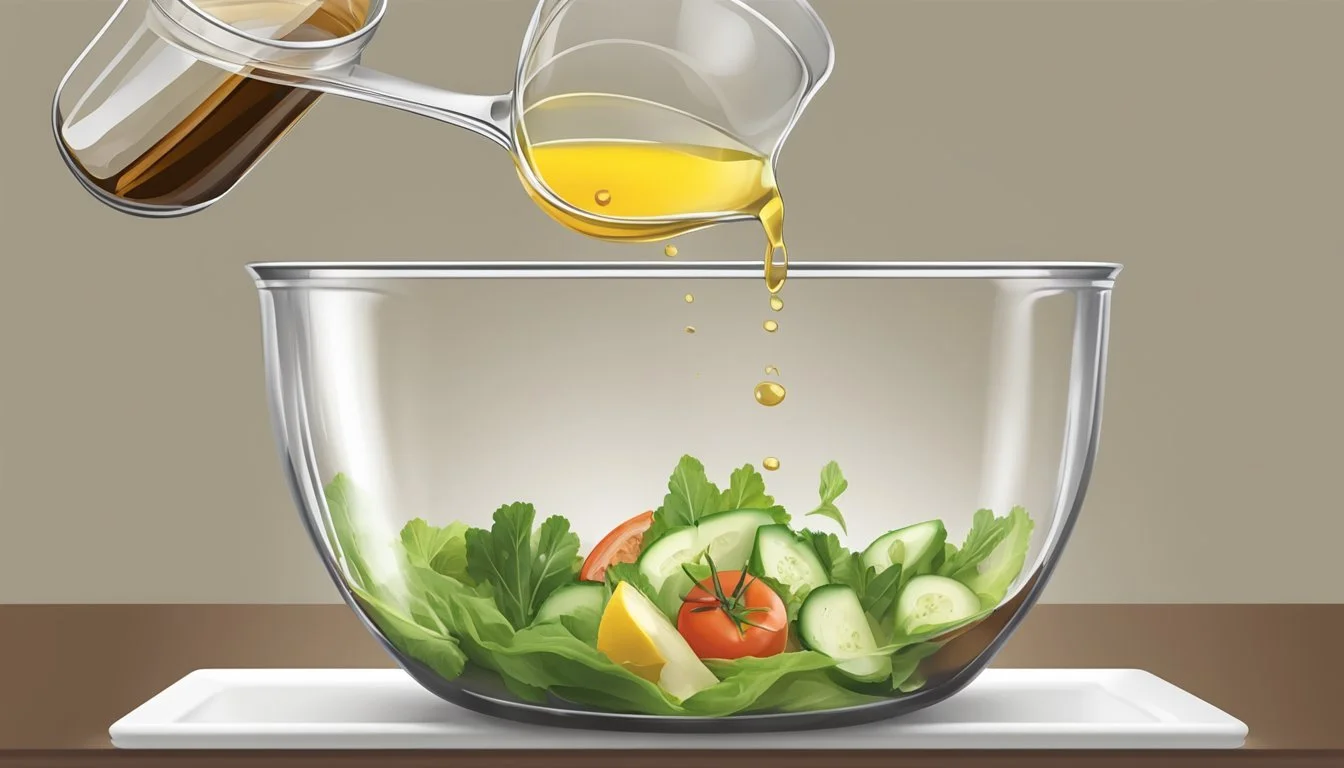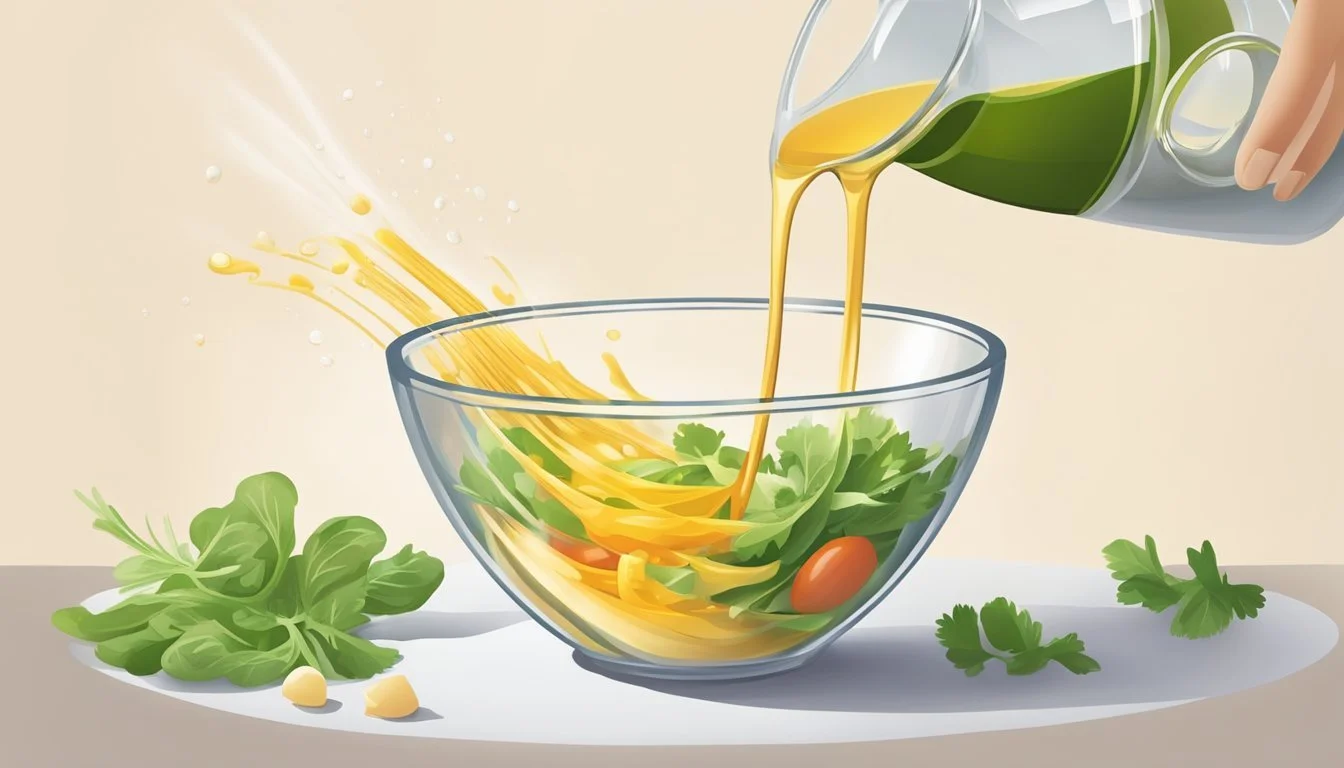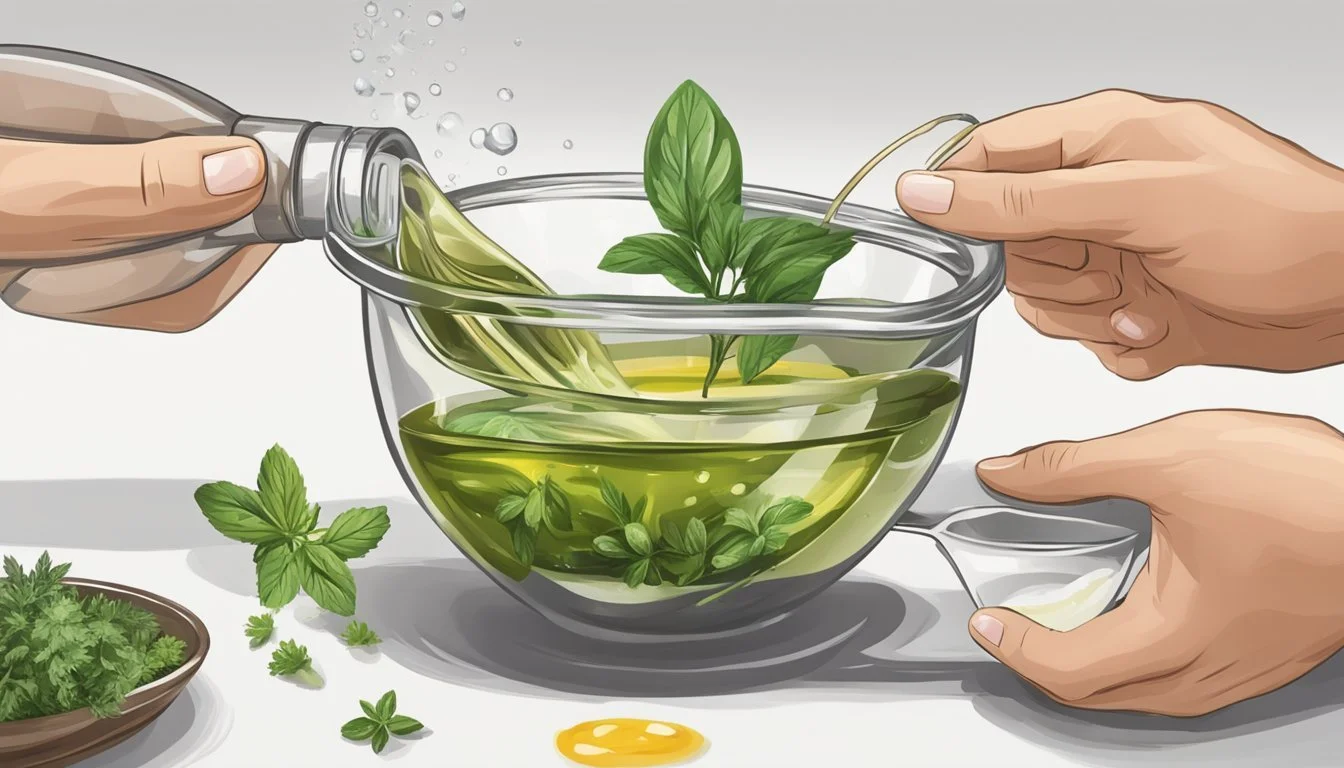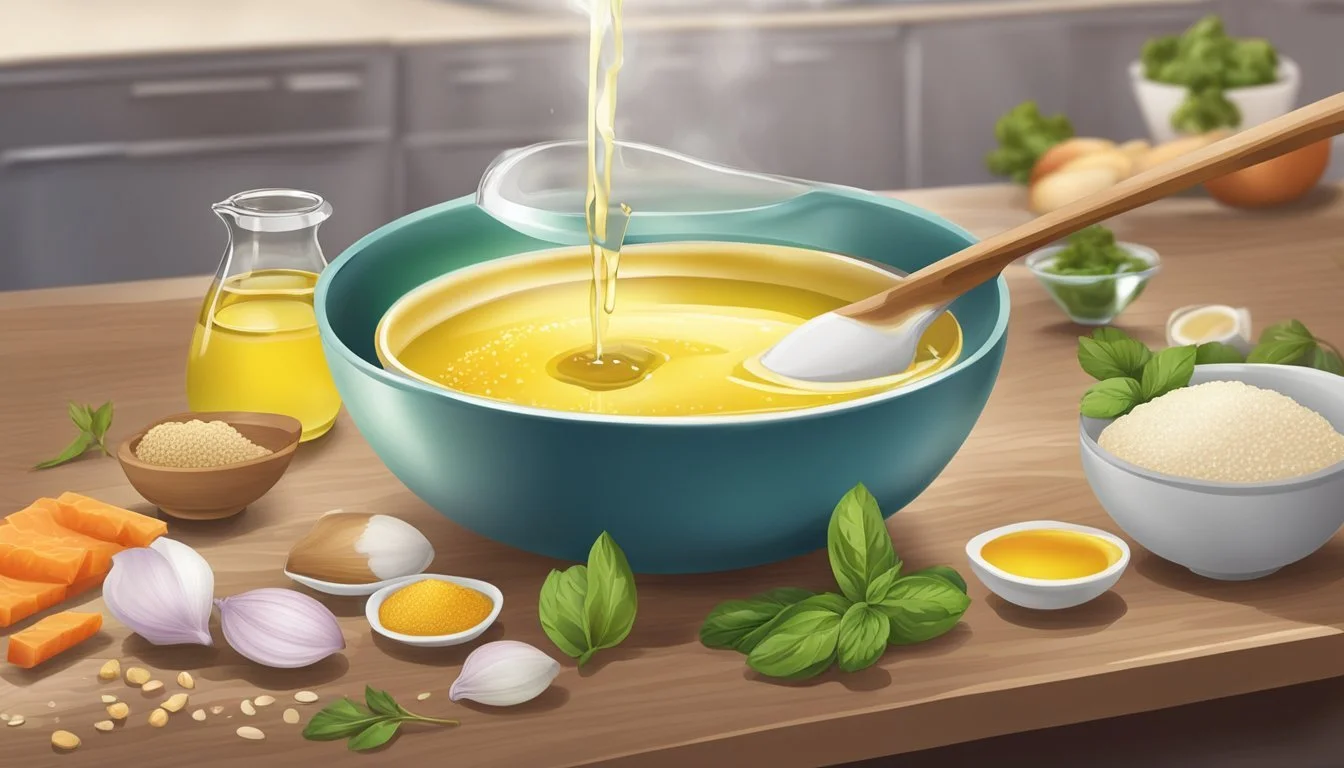How to Measure Ingredients Accurately for the Perfect Salad Dressing Recipe
Creating a homemade salad dressing is a simple way to elevate a dish from good to great. Unlike store-bought options, which often contain preservatives and excess sodium, homemade dressings allow cooks to control the quality and quantity of ingredients. This not only ensures fresh flavor but also provides the ability to tailor nutritional content. A well-made dressing can turn a bowl of greens into a memorable meal, emphasizing the flavors of the salad components with a harmonious blend of acidity, fat, and seasoning.
Measuring ingredients accurately is crucial for the consistency and balance of a salad dressing. Precise measurements ensure that the emulsification is perfect and that the flavors are well-distributed. Whether one is making a zesty vinaigrette or a creamy ranch, the ratio of oil to acid and the amount of seasonings can make or break the dressing. Without accurate proportions, the emulsion might break or the taste could be off, resulting in a less appetizing salad.
When preparing a salad dressing, each component plays a key role. Oils provide a silky mouthfeel and can carry flavors of herbs and spices throughout the dressing. Vinegars and citrus juices add brightness and cut through the richness of the oil, while seasonings like garlic, mustard, and sweeteners add depth and layers of flavor. Achieving the perfect balance requires not only the right ingredients but also attention to detail in measuring them out.
Understanding Salad Dressing Components
Creating the perfect salad dressing requires precise measurements and a solid understanding of how each component interacts to form a balanced, flavorful end product.
Oils and Their Impact
The choice of oil in a salad dressing has a profound effect on the flavor and health profile. Olive oil is a popular choice, contributing a rich taste and beneficial monounsaturated fats. For a more robust flavor, extra virgin olive oil adds a fruity, peppery note that can carry a salad dressing on its own or paired with other flavors.
The Role of Vinegar and Acidity
Vinegar introduces essential acidity to a dressing, balancing the oil's richness while brightening the overall flavor. The type of vinegar used—be it balsamic, red wine, white wine, or another variety—will determine the dressing's character. Acid can also be provided by citrus juice for a different dimension of tartness.
Flavor Additives: Garlic, Herbs, and Spices
Flavor additives such as fresh or minced garlic, various herbs, and black pepper lend complexity to dressings. Freshness and potency are key, so these ingredients should be carefully measured to not overpower the dressing. A small amount of garlic can significantly impact flavor, as can freshly ground black pepper.
Emulsifiers: Mustard and Mayo
Emulsifiers, such as mustard or mayo, serve a dual purpose. They not only incorporate flavor but also stabilize the dressing, preventing the oil and vinegar from separating. Mustard, especially Dijon, is a classic choice that adds a tangy sharpness, while mayo offers a creamy texture and a milder taste.
Creating the Foundation: Oil and Vinegar Ratio
The core of any vinaigrette is the balancing act between oil and vinegar. This foundational pairing provides both the silky texture and zesty flavour that characterizes dressings like the classic French vinaigrette and the richly nuanced balsamic vinaigrette.
A standard ratio for a basic vinaigrette is 3 parts oil to 1 part vinegar. However, the specific type of oil or vinegar can prompt slight adjustments to this ratio.
Oils:
Neutral oils (such as canola or vegetable) support a subtle taste.
Olive oil offers a robust flavor, suitable for a French vinaigrette.
Nut oils (like walnut or hazelnut) bring a distinctive, rich taste.
Vinegars:
Balsamic vinegar, sweet and full-bodied, may require less oil due to its bold flavor.
Red wine vinegar provides a classic vinaigrette bite and may pair well with olive oil.
White wine vinegar is milder and works well in a balanced French vinaigrette.
Below is a simple guide to creating a basic vinaigrette:
Ingredient Quantity Oil 3/4 cup Vinegar 1/4 cup
One should whisk these ingredients together until emulsified. The oil should be added in a slow, steady stream while whisking to create a cohesive and creamy blend. Taste is key; adjustments may be made to better suit one's palate or the salad's components. If the vinaigrette tastes too sharp, one can add more oil; if too bland, a splash more vinegar can correct the balance.
Selecting Quality Ingredients
The difference between a mediocre salad dressing and an exceptional one often lies in the choice of quality ingredients. Understanding which elements to prioritize for freshness and flavor can elevate your homemade salad dressing.
Choosing the Right Olive Oil
When selecting olive oil for your salad dressing, consider its purpose. For dressings, extra virgin olive oil is ideal due to its robust flavor and higher concentration of natural antioxidants. Look for oils that indicate a harvest date, a sign of freshness. A cold-pressed or first-press label ensures minimal processing, preserving the oil’s taste and nutritional integrity.
Freshness in Spices and Herbs
For spices such as black pepper and dried oregano, buying them whole and grinding them as needed will ensure the most vibrant flavors, as pre-ground spices lose potency over time. Herbs like dried parsley should have a bright green color, indicating they have not faded from prolonged storage. If using fresh herbs, they should be brightly colored, with no wilting or browning.
Fresh garlic over powdered or jarred will impart a pungent, clean flavor often sought after in dressings. To achieve the best taste, freshly grate the garlic shortly before use.
Benefits of Fresh vs Store-Bought Condiments
Homemade dressings benefit immensely from fresh ingredients. While store-bought condiments can be convenient, they may contain preservatives that can slightly alter the taste. For salad dressings, fresh vinegars like balsamic or apple cider can bring out a nuanced flavor profile, especially if they are unpasteurized. Fine sea salt or kosher salt is preferable over table salt for a cleaner and crisper saltiness, with kosher salt also being easier to sprinkle evenly due to its larger grain size.
Salad Dressing Recipes
Creating the perfect salad dressing involves careful measurement of each ingredient to achieve a balance of flavors. Precision ensures the desired consistency and taste of the dressing, whether it's a bright vinaigrette or a rich, creamy variety.
Vinaigrette Variations
A classic vinaigrette involves an oil and acid emulsification often flavored with herbs and spices. Acids used are typically balsamic vinegar, champagne vinegar, red wine vinegar, white wine vinegar, or lemon juice. A basic ratio for vinaigrette is 3 parts oil to 1 part vinegar or acid. Users can experiment with different vinegars and oils for unique flavors. For instance, a basil vinaigrette might use extra virgin olive oil and white wine vinegar with freshly chopped basil leaves.
Creamy Dressings: Ranch and Caesar
Creamy dressings like ranch and Caesar deliver a rich consistency through the incorporation of ingredients such as mayonnaise, sour cream, or yogurt. A Caesar dressing often includes anchovies and garlic for umami, while ranch dressing relies on a mix of herbs like dill, chives, and parsley for its signature flavor. Precise measurements include about 1 cup of mayonnaise or sour cream with acid like lemon juice or vinegar, seasoned to taste.
Specialty Dressings: Honey Mustard and Maple
Specialty dressings like honey mustard or maple vinaigrette stand out for their sweet and tangy profile. Honey mustard combines equal parts honey and Dijon mustard with a base of vinegar and oil. For a maple-sweetened dressing, one might blend maple syrup with balsamic or apple cider vinegar, adding a unique sweetness to the tang. These dressings often make use of ingredients like lemon juice or Dijon mustard to add complexity and depth.
Techniques for Mixing and Emulsification
When preparing salad dressings, meticulous mixing and emulsification are key to achieving a stable and flavorful mixture. Emulsification is the process of combining two liquids that typically do not mix, such as oil and vinegar, into a cohesive blend.
Ingredients and Tools:
Liquids: Oil, vinegar, or lemon juice
Emulsifiers: Mustard, honey, or egg yolk
Tools: Whisk, mixing bowl, or mason jar
To begin, a mixing bowl serves as an ideal container for combining ingredients. The chef must ensure that all ingredients are measured accurately before the mixing process commences. It's essential to start with the vinegar or lemon juice, then incorporate the chosen emulsifiers.
Whisking:
Start slow: Begin whisking the vinegar and emulsifier until fully blended.
Add oil gradually: Slowly drizzle in the oil, whisking continuously. This slow addition allows the mixture to form an emulsion as it prevents the oil from overwhelming the mixture and separating.
Mason Jar Technique:
Combine liquids: Add vinegar and oil into the jar.
Add emulsifiers: Include mustard or honey.
Secure lid: Firmly tighten the mason jar lid.
Shake vigorously: Ensure everything is well-mixed to form an emulsion.
Each technique provides a smooth, unified salad dressing when correctly executed. The continuous force applied during whisking or shaking creates a temporary emulsion by dispersing the oil into tiny droplets, which the emulsifier then stabilizes. This process results in a dressing with a sumptuous and consistent texture, perfect for enhancing any salad.
Seasoning and Balancing Flavors
When creating a salad dressing, the seasoning's role is to enhance and complement the core ingredients. A solid foundation for seasoning begins with salt and black pepper. These are essential for elevating the natural flavors present in the vinaigrette or creamy base.
Salt is pivotal, adding depth and bringing out the flavors of other ingredients. It's best to start with a small pinch, taste, and adjust as needed. On the other hand, freshly ground black pepper provides a sharp, woody note and should be used with a lighter hand to not overpower the dressing.
Dressings benefit from an acidic component such as lemon juice or white wine vinegar, which can brighten the taste and add a refreshing zing. They should be added to taste, taking care not to overshadow the other flavors.
Balancing sweetness and tanginess can be achieved with ingredients like honey or Dijon mustard. These also add complexity and can help emulsify the dressing. Here is a simple table to guide ratios for emulsifying:
Ingredient Amount for Emulsification Dijon Mustard 1 teaspoon Honey 1/2 teaspoon
To create a creamy texture, one may utilize mayonnaise, Greek yogurt, or sour cream. These elements should be used in moderation to ensure a velvety consistency without excessive heaviness.
Aromatic powders such as garlic powder and onion powder lend a savory touch that can make a dressing go from good to great. They are potent, so a dash will often suffice.
Furthermore, a drop of Worcestershire sauce adds umami and depth. It's a strong flavor, thus it should be used sparingly and tasted throughout preparation to maintain balance.
In summary, measuring and balancing flavors in salad dressing is a delicate process that involves the addition of seasonings and taste-testing until the desired balance is achieved. Here is a checklist for seasoning a dressing:
Begin with salts and acids, adjust these first for basic flavor structure.
Incorporate sweeteners and emulsifiers like honey and mustard.
For creamy dressings, add mayonnaise, Greek yogurt, or sour cream judiciously.
Use aromatic powders, such as garlic and onion powder, sparingly.
Add a few drops of Worcestershire sauce if needed for complexity.
Tasting and adjusting the seasoning incrementally is critical in achieving the desired balance in a homemade salad dressing.
Adjusting Recipes to Taste and Nutrition
Adjusting a homemade salad dressing recipe to align with nutritional goals and taste preferences can make a significant impact on one’s diet. Salad dressings offer the flexibility to tweak ingredients that influence the nutritional content while enhancing flavors.
Taste Adjustments:
To modify the taste, individuals may experiment with seasoning and acidity levels. A common way to brighten the flavor profile of a dressing is by adding or reducing lemon juice. Here's a simple guideline:
Tangy: Increase lemon juice to 1 tablespoon.
Mild: Reduce lemon juice to 1 teaspoon.
Portion Control and Nutrition Information:
When customizing recipes, the portion size directly affects the nutritional content. Use the following table to manage portions:
Ingredient Standard Measure Adjusted Measure Olive Oil 1/4 cup 2 tablespoons Yogurt 1 cup 1/2 cup
Using yogurt in place of ingredients like mayonnaise can also yield a healthier dressing by lowering calories and fats.
Variations for Healthier Options:
Variations in ingredients can provide alternative nutritional benefits. Here are some swaps:
Substitute full-fat yogurt with a low-fat variant to decrease calorie intake.
Opt for a pinch of salt rather than a full teaspoon for lower sodium content.
Lastly, to achieve specific dietary goals, homemade recipes should align with recommended nutritional information. Utilizing a nutrition calculator catering to homemade recipes can inform adjustments, ensuring healthful eating while maintaining delightful flavors.
Salad Dressing Uses Beyond Salads
Salad dressing versatility extends far beyond its traditional role. It can enhance the flavors and textures of various dishes, offering creative culinary opportunities.
Marinades for Meat
Chicken Marinade:
Ingredients: Caesar dressing
Procedure: Toss chicken in Caesar dressing and refrigerate for a few hours or overnight. For optimal results, grill or roast. The dressing imparts a rich, garlicky flavor and ensures the chicken remains moist.
Tasty Toppings for Vegetables and Sandwiches
Vegetable Drizzle:
Creamy Avocado: Blend half an avocado with Greek yogurt, lime juice, olive oil, cilantro, garlic, and salt.
Application: Drizzle over cooked vegetables or use as a sandwich spread to add a creamy texture and an extra layer of flavor.
Creamy Bases for Pasta Salads
Pasta Salad Dressing:
Ingredients: Italian dressing components (vinegar, Dijon mustard, herbs, oil).
Mixing: Whisk together ingredients, slowly incorporating olive oil to form an emulsion.
Use: Toss with cooked pasta for a refreshing pasta salad, ideal for a side dish or main course.
Storing and Shelf-Life Considerations
When storing homemade salad dressing, one must consider refrigeration methods, signs of spoilage, and strategies for maintaining freshness to extend shelf-life.
Refrigeration Best Practices
Homemade salad dressing should be stored in the fridge to maintain optimal freshness. The appropriate temperature is typically between 35°F (1.7°C) and 40°F (4.4°C). Utilizing air-tight containers or jars with tight seals can prevent outside contaminants and preserve the dressing’s quality. One might also divide the dressing into small portions, perhaps in ice cube trays, for ease of future use.
Identifying Spoilage Signs
Homemade dressings lack the preservatives found in commercial versions, so they can spoil more readily. One should check for discolouration, an off smell, and any unexpected changes in texture. A sour or bitter taste also indicates that the salad dressing has likely spoiled and should not be consumed.
Maximizing Freshness
To maximize the shelf-life of homemade salad dressing, the individual should ensure a balance of acidity within their recipe. Vinegar-based dressings generally last longer than those with fresh ingredients, such as dairy or citrus juice, due to higher acidity levels. It is crucial to store the dressing in a cool, dark section of the refrigerator, away from the light, as light can degrade quality. A heat treatment process can also be applied during preparation to kill potential spoilage organisms, thereby extending the shelf-life.
Presentation and Serving Suggestions
When serving salad dressings, presentation can enhance both the appeal and the overall dining experience. Here are some tips and suggestions:
Choice of Container: For a casual setting, mason jars offer a rustic charm and are practical for shaking and serving dressings. In a more formal context, one might opt for glass pitchers or dressings cruets that combine elegance with functionality.
Serving Method:
Pour: A controlled pour spout is essential for allowing guests to dress their salads (What wine goes well with salads?) to their liking.
Drizzle: For a touch of finesse, use a spoon or a squeeze bottle to drizzle dressing elegantly over the salad.
Place the dressing on the side of the salad to allow each individual to add the amount they prefer.
Always include a serving utensil suitable for the style of dressing (spoon for thicker dressings or a spout for vinaigrettes).
Garnishing:
Garnish the top of the dressing with a sprinkling of finely chopped herbs or a few drops of a complementary, flavored oil to hint at the dressing's flavor profile.
Temperature: Serve cream-based dressings chilled, while oil-based dressings should be at room temperature to ensure the best consistency and flavor.
Quantity:
A guideline for serving is approximately one to two tablespoons of dressing per salad serving.
By paying attention to these aspects of presentation and serving, one not only respects the integrity of the salad dressing but also elevates the dining experience through thoughtful and attractive presentation.
Additional Resources
When perfecting salad dressings, utilizing additional resources can ensure accuracy in measurements for optimal flavor and health benefits. These tools provide detailed guidance to help chefs and cooks of all levels achieve consistency and precision in their creations.
Printable Recipes
Printable recipes can be invaluable when measuring ingredients for salad dressing. They typically provide exact quantities for each component, helping to maintain the balance between acidity, oil, and seasoning.
Where to find: Online cooking blogs, culinary websites, and cooking forums.
Benefits:
Easy to follow step-by-step instructions.
Can be saved for future reference or shared with others.
Nutritional Information Guides
Nutritional information guides give insight into the caloric and macronutrient content of each ingredient, which is particularly beneficial for individuals tracking dietary intake.
Where to find: Food packaging labels, culinary nutrition books, health-focused cooking websites.
Benefits:
Helps in creating dressings that align with specific dietary goals.
Informs about potential allergens and dietary restrictions (such as gluten-free or vegan options).












